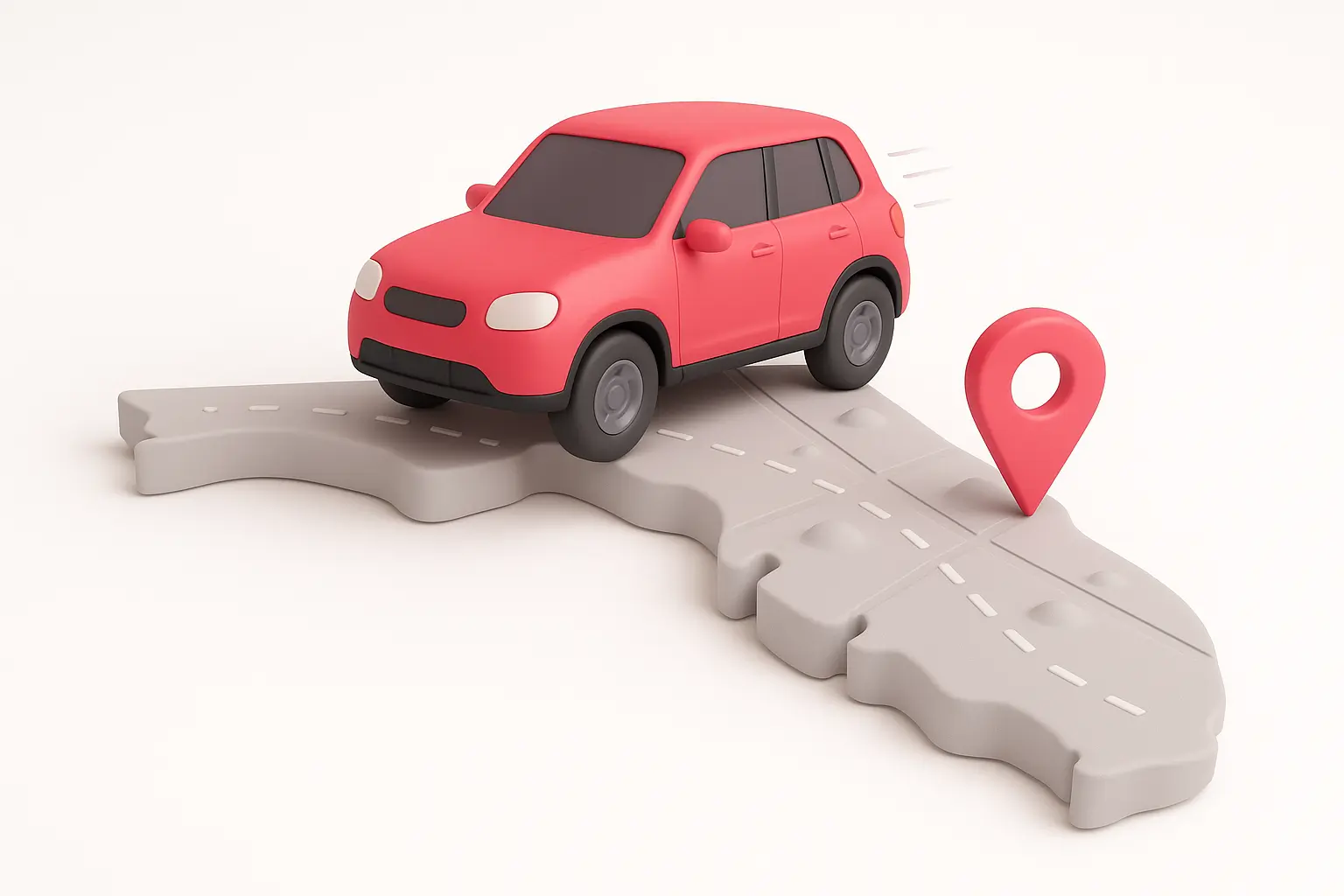The sensor itself is relatively inexpensive—labor is what moves the needle. In higher-rate metro areas or on engines with tight packaging, expect the top of the range (and occasionally $600–$800 if major components must come off).
Real customers Jerry helped
The price you pay for a crankshaft position sensor replacement will depend on your car, where you live, and the parts installed. Jerry helps you quickly see what other drivers are spending today. Here are some examples of customers we’ve helped get the best prices available on their crankshaft position sensor repairs.
Estimates are modeled based on real vehicle and location data; names have been changed. Actual prices will vary by shop, parts, and vehicle condition.
Cost breakdown: Why the price varies
Every day, Jerry helps drivers find fair prices on car repairs—and we’ve identified the most common reasons those prices can vary:
Sensor location and accessibility is the biggest factor:
On some engines the crankshaft sensor sits near the front or top of the engine and is easy to reach; on others, especially many front-wheel-drive cars, it’s buried near the transmission and requires removing shields, pulleys, or the starter. Sensors that are harder to access can add 1-2.5+ hours of labor time
Relearn procedure:
Some cars self-learn after several warm-up cycles. Others—especially many GM and Nissan models—require a crank variation relearn using a professional scan tool. That adds labor time and a small line item.
Parts used:
Parts from the Original Equipment manufacturer (OEM) will be more expensive than refurbished or after market parts.
Jerry recommends: For a sensor this critical, stick to Original Equipment Manufacturer (OEM) or top-tier brands (Bosch, Denso, Hitachi, Delphi, Mopar, Motorcraft, ACDelco). Ultra-cheap sensors can experience a high failure rate, so it’s better to buy quality.
The repair explained: What is a crankshaft position sensor?
A crankshaft position sensor is a small electronic part that tells your car’s computer exactly how fast the engine is spinning and where the pistons are in their cycle. It does this by “reading” a toothed wheel or pattern on the crankshaft as it turns, then sending timing signals to the computer.
Your car uses this information to control fuel injection and spark timing so the engine starts easily, runs smoothly, and makes good power. When the crankshaft sensor starts to fail, you can get hard starting, stalling, rough running, or a no-start condition because the computer can’t “see” the engine position clearly anymore.
The crankshaft position sensor is just a sensor that tells the engine computer where the crankshaft is so it can time fuel and spark correctly. When it fails, the engine often won’t start at all. Instead of guessing, plug a scan tool into the diagnostic port under the dash and read the trouble codes. Then look those codes up in a repair manual or a solid online source so you know what system is acting up. Once you’ve got the problem area pinned down, you can decide if it’s a realistic DIY job for you or something better handled by a professional.

Symptoms of a failing crankshaft position sensor
Spotting crankshaft position sensor problems early can save you money. Here’s what Jerry has seen real drivers experience—and what you should keep an eye on:
- Engine cranks without starting: The starter turns the engine, but it never catches and runs.
- Engine stalling—especially hot: Heat-soak can make a marginal sensor drop out; it may restart after cooling.
- Rough running and misfiring: Unstable idle, shaking and likely misfire codes.
- Poor acceleration: Hesitation and lack of power from incorrect timing.
- Check Engine Light: Crankshaft position sensor fault codes could be phantom codes. The Check Engine Light isn’t always on in a fresh no-start, but may come after the car is driven for awhile—you may have stored or pending faults instead.
Pro tip: A mechanic’s quick tell is a scan-tool RPM while cranking. If the ECU shows 0 RPM during crank, it isn’t seeing a crankshaft position sensor signal. That’s a strong crankshaft position sensor-circuit clue instead of, say, a fuel issue.
Your action plan: How to get it done right
Use this action plan to properly diagnose and resolve the issue. These steps will help you partner with your mechanic to make sure the repair is done correctly and efficiently.
Get a professional diagnosis:
Crankshaft position sensor failure is common, but fuel and ignition issues can mimic it. Jerry customers use the app to help them diagnose their car issues before taking their car to the shop.
Understand the location:
Have the tech show you where the sensor sits on your engine. If it’s behind the balancer or at the bellhousing, expect higher labor costs.
Discuss related parts:
If access overlaps, ask about cam sensors, belts and the front crank seal. Bundling can save money. The Jerry app can give you quotes on multiple services at once.
Clarify relearn:
Ask: “Does my car need a crank variation relearn after replacement and is that on the estimate?”
Verify workmanship:
If the balancer is removed, confirm the bolt is replaced/torqued to spec and that the harness routing is tidy and heat-safe. Ask to see the old part to deter parts-swapping surprises.
Get competing quotes:
Prices vary with access and rate. Use the Jerry app to pull personalized estimates from vetted local shops, compare OEM vs. top-tier aftermarket parts options and book with transparent pricing.
DIY vs. Pro: What to expect
Whether you’d rather replace your crankshaft position sensor yourself or have a pro handle it, Jerry can help you understand what you’ll pay for parts and shop labor. Here’s what to think about before deciding to DIY this repair.
DIY pointers that techs actually use:
- Identify sensor type: Visually verify that the replacement sensor is the same as the existing one. Using a parts catalog, obtain the replacement sensor according to the year, model and engine in the vehicle being repaired.
- Access pitfalls: Sensors can seize in the bore. Don’t pry against aluminum covers—twist and pull, then lightly lube the O-ring on install. If a harmonic balancer must come off, you’ll need a balancer puller and the proper torque spec/bolt procedure on reassembly.
- Harness routing: Keep the lead away from exhaust and moving parts, then ensure the connector clicks and seals.
When access requires a balancer, starter, or subframe work—or when a relearn is required—save yourself the grief and book a pro.
Related repairs & inspections
If you’re replacing your crankshaft position sensor, it can be smart to check on other related repairs at the same time—you may save money by bundling services. Jerry helps drivers find fair prices for multiple repairs in one visit.
- Camshaft position sensor(s): Same age/type and often similar failure rate, so consider if access overlaps.
- Timing belt/chain: If the crankshaft position sensor hides behind the timing cover, inspect the belt/chain and tensioners. If near the end of service life, replacing now avoids duplicated labor later.
- Serpentine/drive belts & front crank seal: If the balancer comes off, this is prime “while-you’re-there” work.
- Wiring/reluctor check: Look for oil-soaked or brittle harness sections and excessive metal on magnetic tips (which can hint at reluctor damage).
What our customers are asking
-
Can I drive with a bad crankshaft sensor?
-
What’s the difference between a crankshaft and camshaft sensor?
-
Will a new sensor fix my “crank but no start” problem?
-
Anything to expect after the repair?

Steve Kaleff began working on cars at the very young age of nine years old, when his dad actually let him make fixes on the family car. Fast forward to the beginning of a professional career working at independent repair shops and then transitioning to new car dealerships. His experience was with Mercedes-Benz, where Steve was a technician for ten years, four of those years solving problems that no one could or wanted to fix. He moved up to shop foreman and then service manager for 15 years. There have been tremendous changes in automotive technology since Steve started his professional career, so here’s looking forward to an electric future!

Everett Cook is an award-winning journalist and editor with more than 10 years of experience across a variety of industries. In editing for Jerry, Everett’s mission is to help readers have a better understanding of the costs of owning or leasing a car and to better understand their vehicle in terms of insurance and repairs. Prior to joining Jerry, Everett was an editor for Axios. His previous work has been featured in The New York Times, The Los Angeles Times, The San Francisco Chronicle, The Atlantic, Atlantic Re:think, The Boston Globe, USA Today, and others. He’s also been a freelance writer and editor with experience in SEO, audience building, and long-term content roadmaps. Everett is a proud graduate of the University of Michigan.









